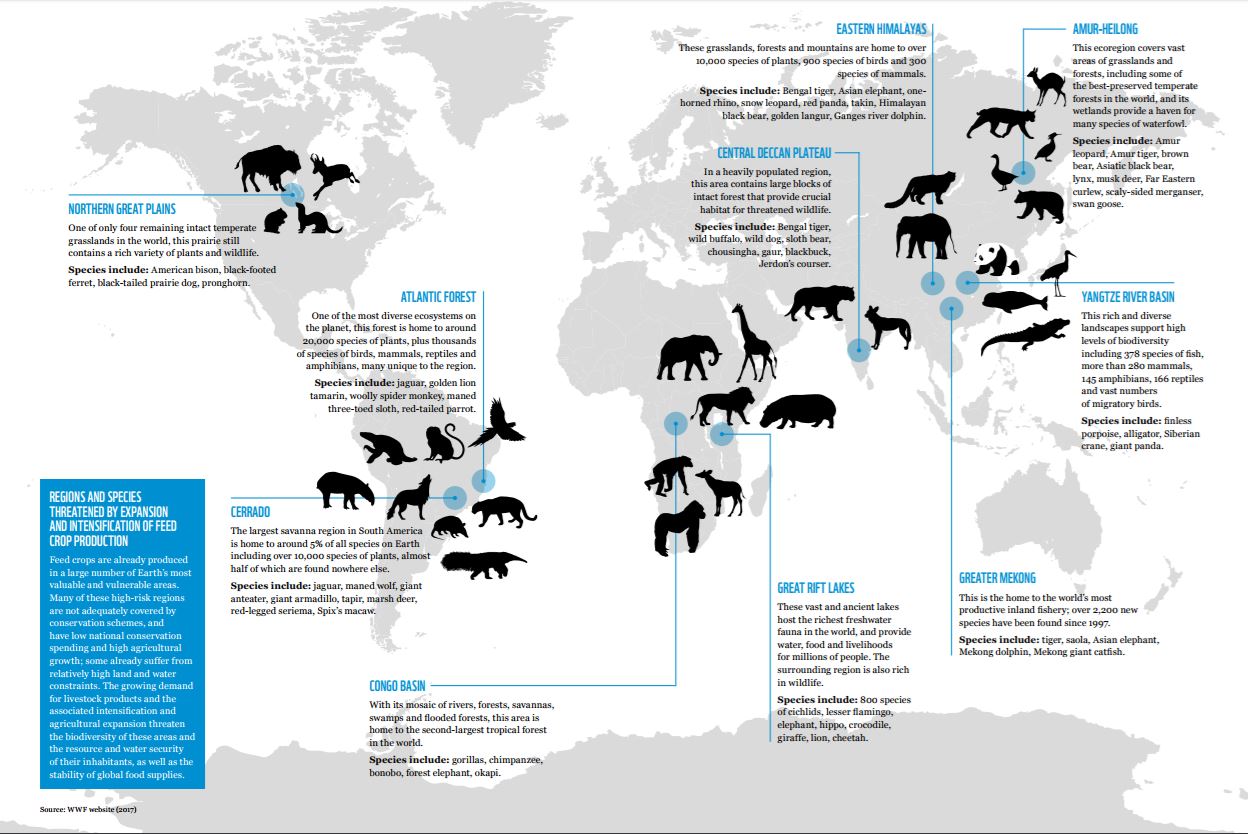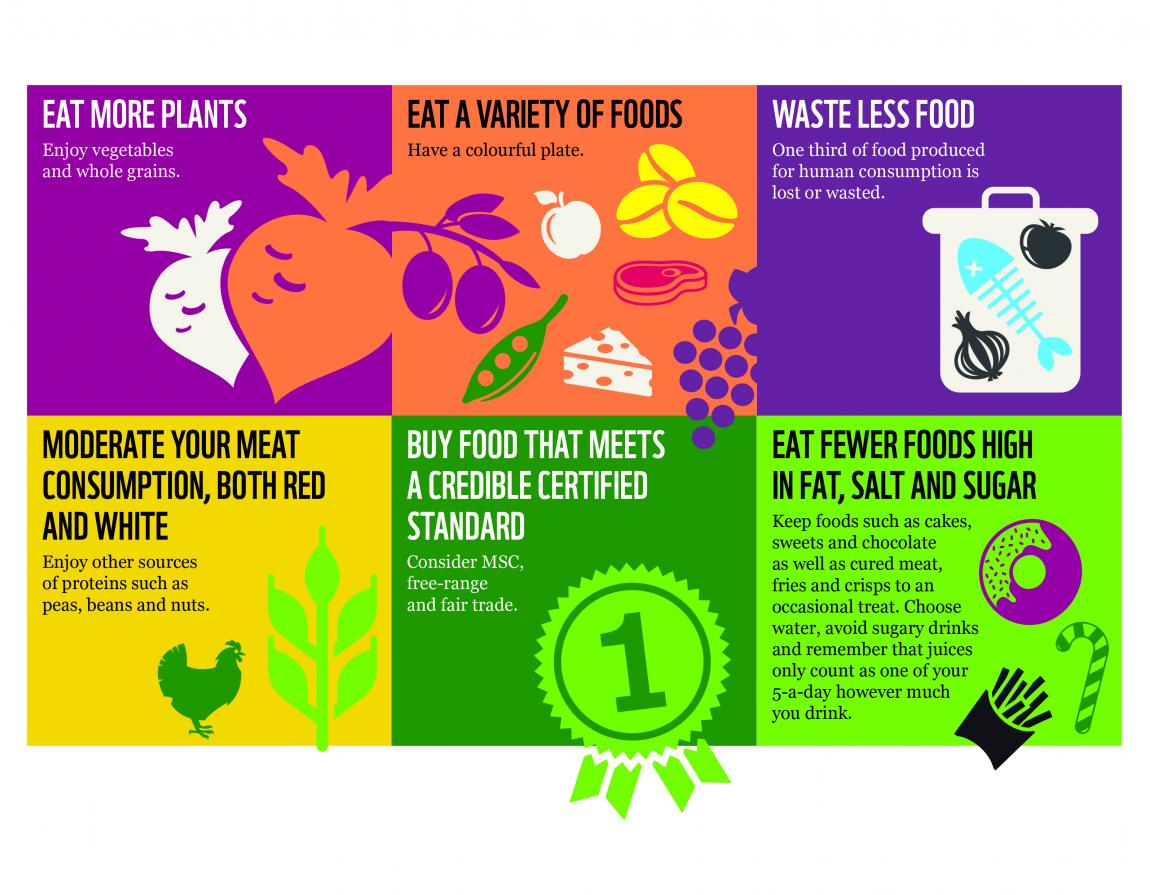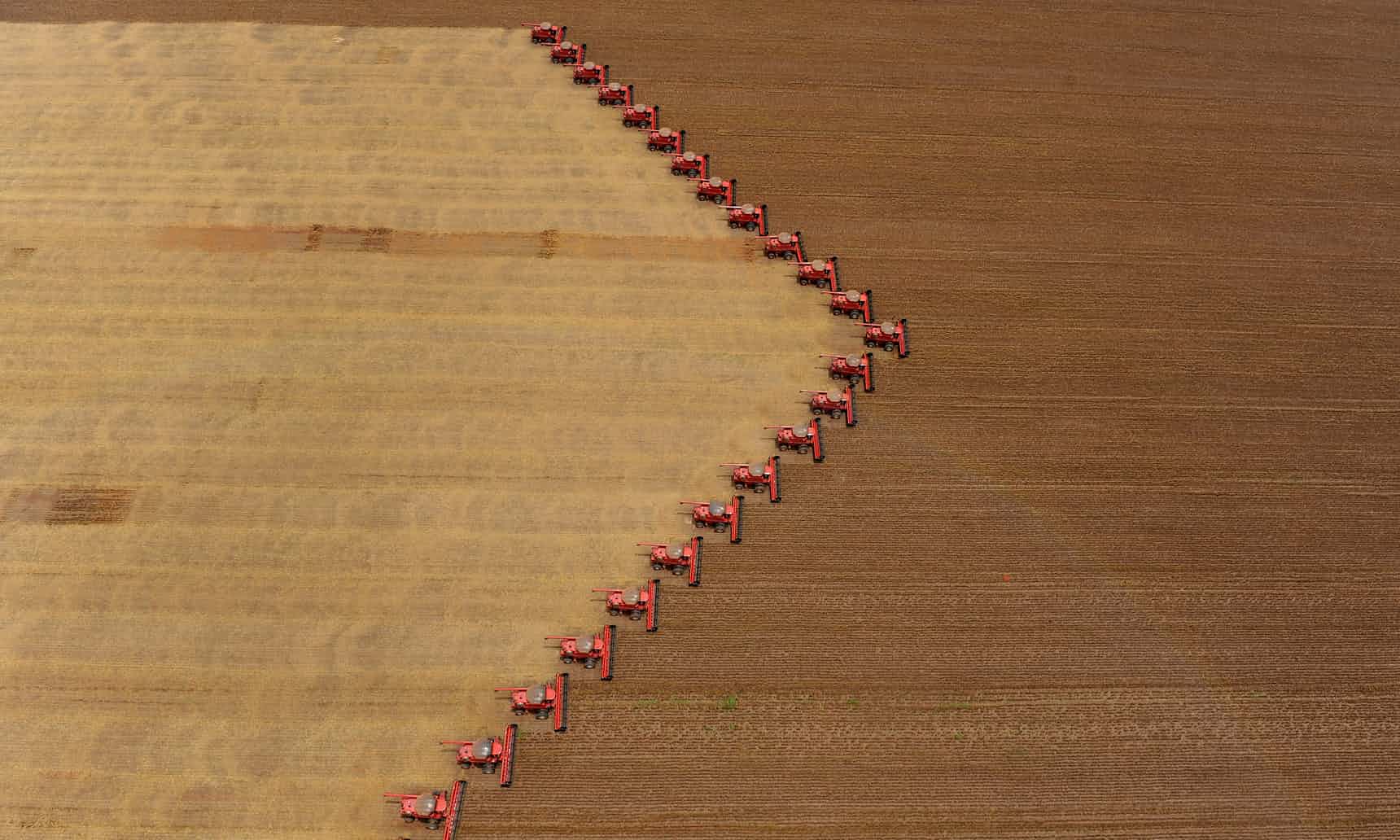Photo: Maurilio Cheli/AP Workers on tractors harvest soybeans in the deforested land of Campo Novo do Parecis, in the Brazilian state of Mato Grosso.

60% of global biodiversity loss is down to meat-based diets which put huge strain on Earth’s resources
Today, more and more people are eating animal products such as meat & dairy. Our new report, ‘Appetite for Destruction’, highlights the impact that animal feed production is having on species, habitats and our health.
The huge amount of land needed to produce protein-rich feeds such as soy is having devastating effects on species & their habitats, especially in vulnerable areas such as the Amazon, the Congo Basin & the Himalayas. In fact, our UK food supply alone is directly linked to 33 species extinctions at home and abroad.
On average, we consume between 64 and 88g of protein per day, which is well above the 45-55g recommended by nutritional guidelines. This means that in 2010, we needed an area the size of Yorkshire to produce enough soy to feed our livestock. If global demand grows as anticipated, we’d need to step up our feed production by 80%, which just isn’t sustainable.
With over 23 billion chickens, turkeys, geese, ducks and guinea fowl on the planet (more than three per person!), it’s not surprising that intensive farming has led to lower quality food. For example, you’d have to consume a whopping six chickens today to get the same amount of healthy omega-3 fatty acid found in just one chicken in the 1970s.
So how can we feed the world and have enough space for wildlife at the same time? Simply put, we need to consume and produce food differently. If everyone ate the nutritionally recommended amount of animal products, we’d need 13% less land to grow feed. This means we’d save an area the size of the European Union from agricultural production.
The Livewell principles below give guidance on how to make small changes to our diets to benefit people and planet.
Food is at the heart of many of the issues WWF focuses on. Through our work on sustainable diets, we know a lot of people are aware of the impact a meat-based diet has on water, land and habitats, and the implications of its associated greenhouse gas emissions. But few know the largest impact comes from the cropbased feed the animals eat. In a world where more and more people adopt a Western diet – one that’s high in meat, dairy and processed food – producing crops to feed our livestock is putting an enormous strain on our natural resources and is a driving force behind wide-scale biodiversity loss. The UK food supply alone is directly linked to the extinction of an estimated 33 species at home and abroad.
WWF’s vision of a future where people and nature thrive is threatened by this current food system. This report looks at the impacts our appetite for animal – and in particular the associated hidden impacts of animal feed – has on our planet. We focus on the production of soy as feed for chicken, pork and fish and the consequences this has for the environment. We link the increased use of feed to the reduced nutritional value of these animal products, before exploring solutions through changing diets and alternative feed production systems.
Food, feed and biodiversity
Rarely a week goes by without a headline about the negative effects of meat on our health or our environment. The reality is that we eat much more animal protein than we need to lead healthy lives. While the UK nutritional guidelines recommend 45-55g of protein per day, the average UK consumption is 64-88g, of which 37% is meat
and meat products.
the more animal products we eat, the more feed we need to produce. But growing the crops used for feed, such as soy and maize, eats up land. Today, protein-rich soy is such an important feed ingredient that the average European consumes approximately 61kg of soy per year, largely indirectly through the animal products that they eat like chicken, pork, salmon, cheese, milk and eggs. In 2010, the British livestock industry needed an area the size of Yorkshire to produce the soy used in feed. And if the global demand for animal products grows as anticipated, it’s estimated that soy production would need to increase by nearly 80% to feed all the animals destined for our plates.

Feeding chickens, pigs and fish
Globally, the biggest user of crop-based feed is the poultry industry in Asia-Pacific, Europe and North America, which used 41.5% of the world’s feed in 2009. Poultry increased its share of world meat production from 15% in the mid- 1960s to 32% by 2012 as per capita consumption increased threefold. In 2014, there were over 23 billion chickens, turkeys, geese, ducks and guinea fowl on the planet – more than three per person.
The second largest feed crop consumer, with 30% of the world’s feed in 2009, is the pig industry. It’s grown steadily in the past decade and is forecasted to continue to climb to meet rising demand. In the UK, pork is the second favourite meat after chicken, with each person eating on average 25kg a year in 2015 – nearly the whole recommended yearly intake for all meats. With the rapid expansion of the middle class in China, demand for pork has also escalated there. Today, over half the world’s pork is produced and consumed in China.
Aquaculture also uses crop-based feeds – around 4% of the global total in 2009. The global average consumption of fish per
person per year has almost doubled in the last 50 years, from 9.9kg in the 1960s to 19.7kg in 2013, and is projected to continue
to rise. With wild fish stocks already under immense pressure, an ever-increasing quantity of seafood is now farmed. But, as in other livestock production sectors, aquaculture has seen a shift towards industrialisation, with intensive systems centred on crop-based formulated feeds being more common. To grow these feeds, the aquaculture indirectly used an additional 26.4 million hectares in 2010 – an area about the size of the UK.
Omega-3 fatty acid
by half since 2006, and farmed carp and tilapia have much lower levels of omega-3 compared to their wild counterparts. While feeds can be supplemented with fishmeal, fish oil and various vegetable oils containing omega-3, there are serious concerns that our current food system will not be able to meet the future fatty acid needs of our growing global population.
Sustainable diets
and environmentally sustainable way, we need to consume and produce food differently.
Union – would be saved from agricultural production. WWF’s Livewell Plates and six Livewell principles are good guides on how to put this into action. They illustrate how we can ensure people get their necessary nutritional requirements without a further increase in agricultural land area and still contribute towards meeting the Paris Agreement commitment to keep global
warming well below 2°C. Eating less animal protein would also make production systems with lower environmental impact
and healthier, more nutritious outputs that much more possible.
Livewell Principles

Feed innovations
requirements that don’t compromise the nutritional content of animal products. A number of innovative options are being considered as potential feed ingredients to replace terrestrial crops such as soy and maize.




